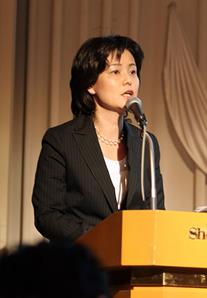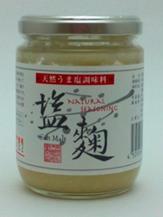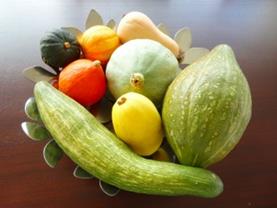Cultural exchange and local revitalization through food
Ms. Misako Nitta, President, Courtyard Co., Ltd.
Ms. Misako Nitta is the president of Courtyard Co., Ltd., which, among other things, develops recipes and products so that people can eat the diverse range of seasonal ingredients harvested in Japan healthily and heartily. IHCSA Café asked Ms. Nitta, who travels around Japan in her capacity as speaker and consultant, about local revitalization utilizing agricultural products lying dormant in the regions and about Japanese food culture, which is edging toward being registered as a world intangible cultural heritage.

Ms.Nitta speaks at the Japan Sommelier Association.
What made you become a food and agriculture coordinator?
As I pursued my research into vegetable cooking, I realized that agricultural crops are extremely individualistic and attractive food products. However, because a gap emerged between consumers and producers over the long history of Japanese agriculture, unfortunately there came to be a mismatch between the needs of the former, who want to eat tasty agricultural products, and the needs of the latter, who want people to eat their own products. That was the reason why I began my activities as a coordinator.
I realized that as a coordinator it was necessary to have an understanding of the flow of agricultural products from production to distribution, sale, and consumption and present conditions, so I visited production areas around the country, engaged in front-line agriculture, and experienced face-to-face sales at stores and elsewhere.
Because of such factors as the prolonged recession, low birthrate, and aging of society in Japan, nonmetropolitan regions are losing their vitality. What are the current issues facing the regions that have become evident from your project to link agriculture and eating?
When I visit local areas, I often hear people say that “our region doesn’t have any resources to speak of.” But as an outsider visiting the area, it seems to me that actually it is a very attractive region possessing various resources. I think one of the reasons why local people do not see the good points of their region is that they have few opportunities to look objectively at their locality. In order to take an objective look at an area, it is necessary to have exchange with people outside the region and forward-looking information. Without these things, people end up with a sense of blockage.

Ms. Nitta’s cooking classes are always very popular.
There are moves to promote diversification through the so-called sextiary sector, such as the manufacture and sale of processed food products using local materials and the management of tourist farms.* In promoting projects like these, what points do you think should be taken into consideration and what are the secrets of success, as it were?

“Shiokoji” (salted rice malt), an all-purpose condiment produced by Ms. Nitta
I think the direction of this so-called sextiary sector will differ depending on such things as agricultural product and farming styles and regional characteristics. So in promoting new product development and other projects, it is important to search for the most suitable ways and always to be thinking about when, where, and who you want to sell your product to, as well as good quality and originality.
In addition, through growth of the sextiary sector, direct links are established among various people, not only local residents but also people involved in agriculture, commerce, engineering, in developing this sector and revitalizing a region lies in pursuing not only your own happiness but the happiness of all of these people concerned.

“Amela chocolate” developed using high-sugar concentration “amela” tomatoes
* Agricultural production itself is a primary industry. The so-called sextiary sector refers to agricultural management that diversifies into the secondary and tertiary industries, becoming involved, for example, in the manufacture and sale of processed food products and services utilizing local resources, such as tourist farms, thereby endeavoring to promote regional revitalization.
The Japanese government is taking the initiative in trying to get Japanese food culture, which is highly appraised worldwide, registered as a world intangible cultural heritage. What do you think would be an effective focal point for conveying this message overseas?
Japanese food culture has been nurtured over a long time. The Japanese are a farming people. They tilled paddies and fields rooted in the local area and fostered a culture there. So each area has traditional food, eating styles, and related performing arts and so on. I think Japanese food culture could be conveyed overseas in a more easily understandable manner if the focus were placed not only on cooking but more widely on the connection between food and culture and both sides spoke out from their respective standpoints. It is “food culture,” after all.


Finally, what are your ambitions for the future?
Food has the power not only to fill the stomach but to enrich the spirit as well. The kanji for food [食] is composed of the characters for “person” and “good.” In other words, it means “making a person feel better.” So, through the power of food, I want to help both people and local areas to feel better and more cheerful and sometimes to soothe them in both body and mind. Also, as a part of food culture, I would like to convey the depths and attractions of Japanese agricultural products not only domestically but overseas as well.

Profile of Ms. Misako Nitta
President, Courtyard Co., Ltd.
Food and agriculture coordinator, vegetable cooking researcher
Lecturer, Japan Vegetable Sommelier Association
Director, NPO Vegetable and Culture Forum
Food and agriculture coordinator, Food Marketing Research and Information Center
Instructor of “Green Table” classes (“spaces for delicious vegetables and cooking”)
Based on the theme of “bringing delicious vegetables from the fields to the dining table,” Ms. Nitta tours and inspects production areas around Japan from her perspective as a housewife and vegetable cooking class instructor. Utilizing her experience in launching the “Marche” agricultural product direct-sales market in Tokyo and her involvement in front-line agricultural production, she engages in recipe development, product development, and many kinds of events linking producers and consumers with the motto of “food proposals to bring out the needs of consumers and the qualities of agricultural products.” She acts as an advisor to not only ordinary consumers but producer organizations, nursery companies, actual-demand parties, and others as well and also provides coordination and advice relating to regional revitalization using local agricultural crops and special product development.
Tochigi Prefecture: Advisor, Tochigi Marche
Chiba Prefecture: Product development consultant, Chiba Strategic Design Utilization Juku
Fukushima Prefecture: Product design coordinator, Rokujika (Diversification) Network
Shizuoka Prefecture: Outside brain for Sun Farmers Inc. (which produces “amela” tomatoes)
And more . . .
Courtyard Co., Ltd.:
http://courtyard.co.jp/ (Japanese only)
